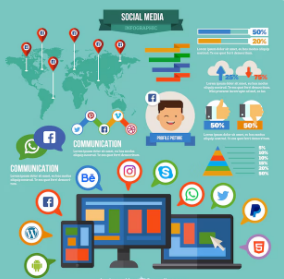Search Engine Optimization (SEO) merupakan strategi kunci dalam pemasaran digital yang bertujuan untuk meningkatkan peringkat situs web Anda di hasil pencarian mesin pencari seperti Google. Dengan perubahan algoritma yang terus-menerus, artikel ini akan menjelaskan teknik-teknik SEO terbaru yang dapat membantu meningkatkan visibilitas situs web Anda dan mendatangkan lebih banyak pengunjung.
1. Pentingnya SEO dalam Pemasaran Digital
SEO adalah kunci untuk meningkatkan lalu lintas organik (tidak berbayar) ke situs web Anda. Dengan menempatkan situs Anda di halaman pertama hasil pencarian, Anda tidak hanya meningkatkan kesadaran brand tetapi juga meningkatkan peluang untuk mendapatkan prospek baru dan meningkatkan konversi.
2. Teknik SEO Terbaru yang Efektif
a. Optimisasi untuk Mobile-First Indexing
Dengan peningkatan penggunaan perangkat mobile, Google sekarang menggunakan indeks mobile-first untuk menentukan peringkat situs web. Pastikan situs Anda responsif dan teroptimasi dengan baik untuk perangkat mobile.
b. E-A-T (Expertise, Authoritativeness, Trustworthiness)
Google semakin mempertimbangkan faktor-faktor E-A-T dalam menilai kualitas konten. Pastikan konten Anda dikembangkan oleh penulis yang memiliki keahlian dan otoritas dalam bidangnya.
c. Konten yang Relevan dan Berharga
Konten yang relevan dan bermanfaat masih menjadi fokus utama SEO. Buatlah konten yang memecahkan masalah atau menjawab pertanyaan pengguna dengan cara yang informatif dan bermakna.
d. Kecepatan Memuat Halaman (Page Speed)
Google menilai kecepatan memuat halaman sebagai faktor peringkat yang penting. Gunakan alat seperti Google PageSpeed Insights untuk mengidentifikasi dan memperbaiki masalah yang memperlambat waktu pemuatan halaman situs Anda.
e. Schema Markup (Structured Data)
Menambahkan schema markup ke situs Anda membantu mesin pencari memahami konten Anda dengan lebih baik, yang dapat meningkatkan kemungkinan tampilan fitur kaya (rich snippets) di hasil pencarian.
f. Optimisasi Pengalaman Pengguna (User Experience, UX)
Pengalaman pengguna yang baik, seperti navigasi yang mudah, desain responsif, dan waktu pemuatan yang cepat, tidak hanya meningkatkan peringkat SEO tetapi juga mempengaruhi tingkat konversi.
g. Backlink Berkualitas
Membangun backlink dari situs web otoritatif dan relevan masih menjadi strategi SEO yang efektif. Fokuslah pada mendapatkan backlink dari sumber yang dapat dipercaya dan relevan dengan industri Anda.
3. Langkah-Langkah Implementasi SEO
a. Audit SEO Situs Web Anda
Lakukan audit menyeluruh untuk mengidentifikasi area-area di mana perbaikan diperlukan, seperti kesalahan teknis, masalah kecepatan, dan optimisasi kata kunci.
b. Penelitian Kata Kunci yang Mendalam
Lakukan riset kata kunci untuk mengidentifikasi kata kunci utama dan frasa pencarian yang relevan dengan bisnis Anda. Gunakan alat seperti Google Keyword Planner atau SEMrush untuk membantu dalam proses ini.
c. Buat Konten Berkualitas Tinggi dan Optimalisasi SEO
Berdasarkan riset kata kunci, buatlah konten yang informatif, menarik, dan relevan. Pastikan untuk mengoptimalkan judul, meta deskripsi, heading, dan konten itu sendiri dengan kata kunci yang tepat.
d. Pantau dan Evaluasi Kinerja SEO Anda
Gunakan alat analisis web seperti Google Analytics dan Search Console untuk memantau kinerja SEO Anda secara teratur. Tinjau metrik seperti lalu lintas organik, peringkat kata kunci, dan tingkat konversi untuk mengukur efektivitas strategi Anda.
4. Studi Kasus: Implementasi Sukses Teknik SEO
Sebagai contoh, perusahaan Z berhasil meningkatkan peringkat kata kunci mereka di halaman pertama Google dan meningkatkan lalu lintas organik mereka sebesar 50% dalam enam bulan setelah menerapkan strategi SEO yang terfokus pada konten yang berkualitas dan optimisasi teknis.
5. Kesimpulan
SEO tetap menjadi strategi yang kuat dan efektif dalam pemasaran digital. Dengan mengikuti teknik-teknik terbaru dan terus-menerus mengadaptasi strategi Anda sesuai dengan perubahan algoritma mesin pencari, Anda dapat meningkatkan visibilitas situs web Anda, menghasilkan lebih banyak lalu lintas organik, dan mencapai tujuan pemasaran Anda dengan lebih efektif di era digital yang terus berkembang ini.









